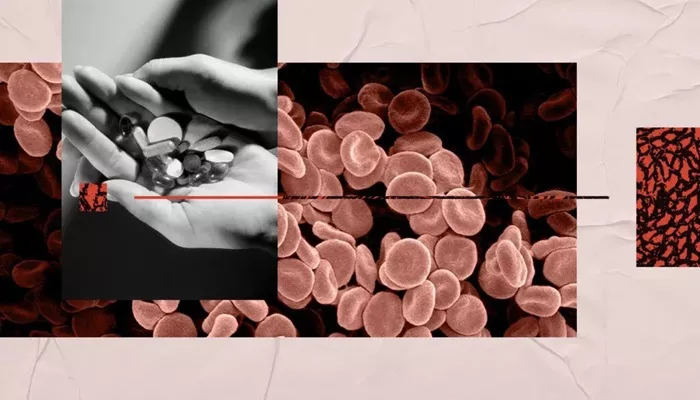Hyperlipidemia and hypercholesterolemia are terms often used interchangeably in discussions about lipid levels in the blood. However, they refer to different conditions that are important to understand, especially in the context of cardiovascular health. This article will delve into the definitions, causes, risk factors, symptoms, diagnosis, and treatment options for both conditions, providing a comprehensive overview suitable for both healthcare professionals and the general public.
What Is Hyperlipidemia?’
Hyperlipidemia is a general term that refers to elevated levels of lipids in the blood. Lipids include various types of fats, such as cholesterol and triglycerides. This condition can lead to serious health issues, including heart disease, stroke, and other cardiovascular problems.
SEE ALSO: Which Class of Drugs Is Not Used to Treat Hyperlipidemia?
Types of Lipids
The main types of lipids measured in the blood include:
Low-Density Lipoprotein (LDL) Cholesterol: Often referred to as “bad” cholesterol, high levels can lead to plaque buildup in arteries.
High-Density Lipoprotein (HDL) Cholesterol: Known as “good” cholesterol, it helps remove other forms of cholesterol from the bloodstream.
Triglycerides: A type of fat found in the blood, high levels can increase the risk of heart disease.
What Is Hypercholesterolemia?
Hypercholesterolemia is a specific type of hyperlipidemia characterized by elevated levels of cholesterol in the blood, particularly LDL cholesterol. This condition is a significant risk factor for cardiovascular diseases, including coronary artery disease and heart attacks.
Key Differences Between Hyperlipidemia And Hypercholesterolemia
| Feature | Hyperlipidemia | Hypercholesterolemia |
| Definition | Elevated levels of lipids (fats) in the blood | Elevated levels of cholesterol specifically |
| Types of Lipids Affected | Includes cholesterol and triglycerides | Primarily focuses on cholesterol |
| Health Risks | Increases risk of heart disease and stroke | Specifically increases risk of atherosclerosis and heart disease |
| Symptoms | Generally asymptomatic; may lead to complications | Generally asymptomatic; may lead to complications |
| Diagnosis | Blood tests measuring various lipids | Blood tests focusing on cholesterol levels |
| Treatment | Lifestyle changes and medications for all lipids | Lifestyle changes and medications specifically targeting cholesterol |
Causes of Hyperlipidemia
Hyperlipidemia can be caused by a combination of genetic and lifestyle factors. Common causes include:
Diet: High intake of saturated fats, trans fats, and cholesterol can elevate lipid levels. Foods such as red meat, full-fat dairy products, fried foods, and processed snacks contribute to this condition.
Lifestyle Factors: Lack of physical activity, obesity, smoking, and excessive alcohol consumption can increase lipid levels.
Medical Conditions: Certain health issues, such as diabetes, hypothyroidism, kidney disease, and liver disease, can also lead to hyperlipidemia.
Genetics: Familial hyperlipidemia is a genetic condition that leads to high lipid levels, often requiring medical intervention.
Causes of Hypercholesterolemia
The causes of hypercholesterolemia overlap significantly with those of hyperlipidemia but focus specifically on cholesterol levels. Key causes include:
Diet: Similar to hyperlipidemia, diets high in saturated and trans fats can lead to increased cholesterol levels.
Genetic Factors: Conditions like familial hypercholesterolemia result from genetic mutations that affect how the body processes cholesterol.
Lifestyle Choices: Inactivity, obesity, and smoking can also elevate cholesterol levels.
Risk Factors
Both hyperlipidemia and hypercholesterolemia share several risk factors:
Age: Risk increases with age, particularly for men over 45 and women over 55.
Family History: A family history of high cholesterol or heart disease can increase individual risk.
Chronic Conditions: Conditions such as diabetes, hypertension, and metabolic syndrome can contribute to both hyperlipidemia and hypercholesterolemia.
Symptoms
Most individuals with hyperlipidemia or hypercholesterolemia do not exhibit symptoms until significant health problems arise. However, potential symptoms and complications can include:
Chest Pain: Indicating potential heart issues.
Shortness of Breath: Particularly during physical activity.
Fatigue: Unexplained tiredness may occur.
Heart Attack or Stroke Symptoms: Such as sudden numbness, confusion, or difficulty speaking.
Diagnosis
Diagnosis of both conditions typically involves blood tests, specifically a lipid panel, which measures:
Total Cholesterol: The overall amount of cholesterol in the blood.
LDL Cholesterol: The “bad” cholesterol level.
HDL Cholesterol: The “good” cholesterol level.
Triglycerides: The level of triglycerides in the blood.
Patients may be advised to fast for 9 to 12 hours before the test for accurate results. Regular screening is recommended for adults, especially those with risk factors.
Treatment Options
Lifestyle Changes
For both hyperlipidemia and hypercholesterolemia, lifestyle changes are often the first line of defense:
Dietary Modifications: Reducing saturated and trans fats, increasing fiber intake, and consuming more fruits, vegetables, and whole grains can help manage lipid levels.
Regular Exercise: Engaging in at least 150 minutes of moderate-intensity exercise each week can improve lipid profiles.
Weight Management: Losing weight can significantly impact lipid levels.
Smoking Cessation: Quitting smoking can improve HDL cholesterol levels and overall heart health.
Limiting Alcohol: Reducing alcohol intake can also help manage lipid levels.
Medications
When lifestyle changes are insufficient, medications may be prescribed:
Statins: These drugs lower LDL cholesterol levels and reduce the risk of heart disease.
Bile Acid Sequestrants: These medications help lower cholesterol levels by binding bile acids in the intestine.
Fibrates: Primarily used to lower triglyceride levels.
PCSK9 Inhibitors: A newer class of medications that significantly lower LDL cholesterol levels.
Niacin: Can help raise HDL cholesterol levels.
Conclusion
Understanding the differences between hyperlipidemia and hypercholesterolemia is crucial for effective management and prevention of cardiovascular diseases. While both conditions involve elevated lipid levels, hyperlipidemia encompasses a broader range of lipids, whereas hypercholesterolemia specifically refers to high cholesterol levels.

